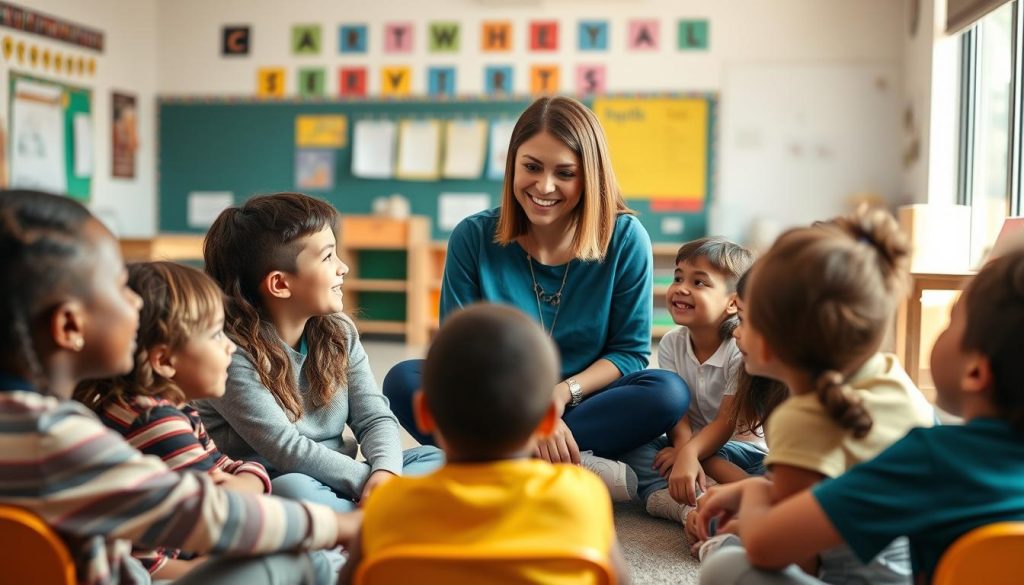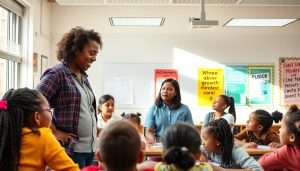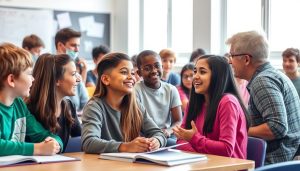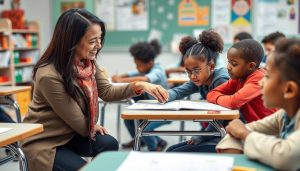Why Relationship Building: Essential Ways to Connect
Before diving into specific strategies, it’s important to understand why these teacher skills matter so much. According to a 2011 study published in Early Education & Development, positive teacher-student relationships are linked to higher academic achievement and improved social-emotional development. When students feel connected to their teachers, they’re more likely to:
- Participate actively in class discussions
- Take academic risks and embrace challenges
- Develop stronger self-regulation skills
- Show improved attendance and reduced behavioral issues
- Report higher levels of school satisfaction
Building these connections isn’t just beneficial for students—it makes teaching more rewarding too. When you establish meaningful relationships with your students, classroom management becomes easier, and you’ll likely experience greater job satisfaction. These teacher skills create a positive feedback loop that benefits everyone in the learning environment.
1. Morning Check-ins: Daily Ways to Connect
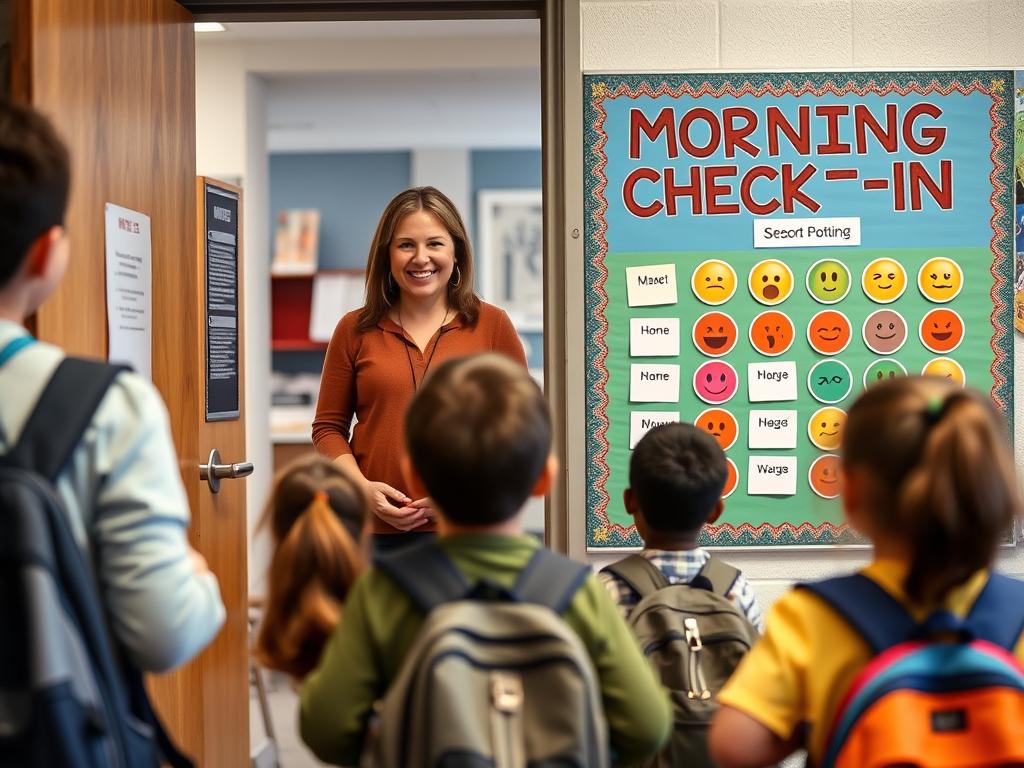
The first few minutes of the school day set the tone for everything that follows. Implementing morning check-ins is one of the simplest yet most effective ways to connect with your students daily. These brief interactions give you valuable insights into your students’ emotional states and help them feel seen and valued from the moment they enter your classroom.
How to Implement Effective Morning Check-ins:
- Greet each student by name at the door with a smile, high-five, or personalized greeting of their choice
- Use a visual check-in board where students can indicate their mood using magnets, clothespins, or digital tools
- Incorporate quick connection questions like “What’s one thing you’re looking forward to today?” or “Rate your energy level from 1-5”
- Create a special morning ritual such as a class mantra, brief mindfulness moment, or appreciation circle
These teacher skills require minimal preparation but yield significant benefits. A study highlighted by Edutopia found that students who received a personal greeting each morning showed a 20% increase in engagement throughout the day.
Remember that consistency is key—make these check-ins a non-negotiable part of your daily routine, even on the busiest days. The few minutes you invest each morning will pay dividends in improved classroom culture and student well-being.
2. Active Listening: Attentive Ways to Connect
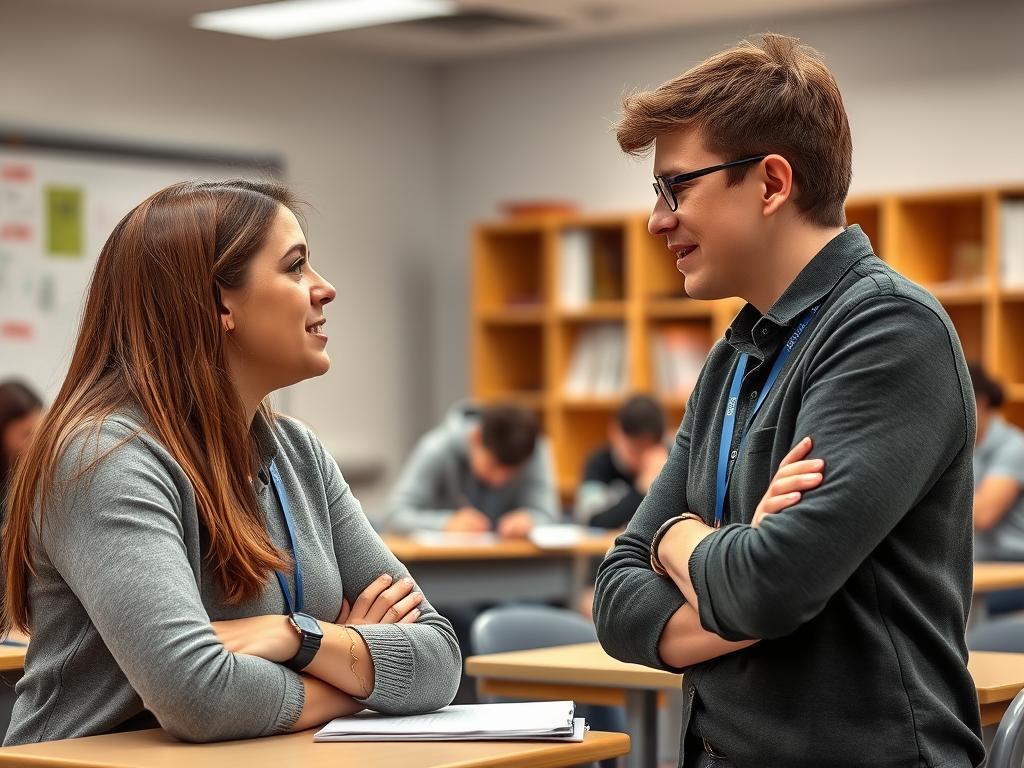
In our fast-paced educational environments, truly listening to students can become a lost art. Yet active listening is one of the most powerful ways to connect with your students and demonstrate that you value their thoughts and feelings. This fundamental teacher skill involves more than just hearing words—it requires full attention, empathy, and thoughtful responses.
Key Components of Active Listening:
- Give full attention by maintaining eye contact and putting away distractions
- Use encouraging verbal cues like “I see,” “Tell me more,” or “That sounds important”
- Practice reflective listening by paraphrasing what you’ve heard to confirm understanding
- Pay attention to non-verbal communication including body language and emotional cues
- Ask thoughtful follow-up questions that demonstrate genuine interest
When students feel truly heard, they’re more likely to share their ideas, concerns, and questions. This openness creates opportunities for deeper learning and problem-solving. Active listening also models important social skills that students can apply in their own relationships.
“The most basic of all human needs is the need to understand and be understood. The best way to understand people is to listen to them.” — Ralph Nichols
To strengthen these teacher skills, try setting aside dedicated time for one-on-one conversations with students throughout the week. Even brief check-ins can make a significant difference in building trust and rapport.
3. Learning About Personal Interests: Individualized Ways to Connect
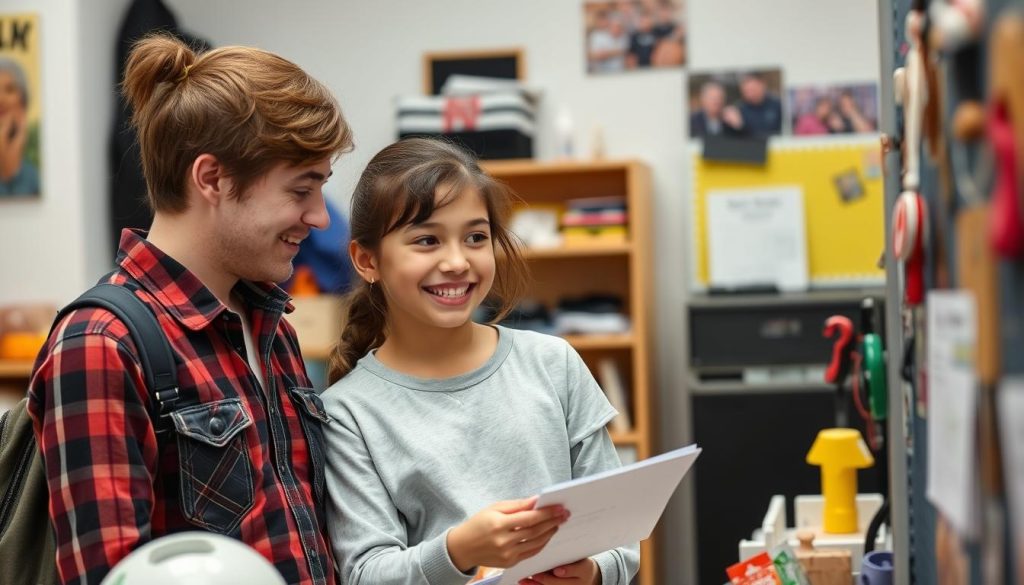
Every student in your classroom brings unique interests, passions, and experiences. Taking the time to learn about these personal aspects of your students’ lives creates meaningful ways to connect that extend beyond academic content. When students feel that you recognize and value their individuality, they’re more likely to engage with learning and feel a sense of belonging in your classroom.
Strategies for Learning About Student Interests:
- Distribute interest inventories at the beginning of the year and revisit them periodically
- Create “All About Me” projects that allow students to share their passions
- Establish a weekly spotlight where students can showcase a personal interest
- Incorporate choice in assignments that allows students to connect content to their interests
- Make personal connections to students’ interests during lessons when relevant
These teacher skills help you build a repository of conversation starters and connection points with each student. When a reluctant reader discovers you’ve found a book related to their favorite hobby, or when you ask about a student’s weekend soccer tournament, you’re demonstrating that you see them as whole people, not just learners in your classroom.
Enhance Your Relationship-Building Skills
Looking for more structured approaches to understanding student interests? Our comprehensive guide offers templates, activities, and assessment tools designed specifically for K-12 classrooms.
Remember that showing interest in students’ lives outside school doesn’t require enormous time investments. Brief, authentic interactions that reference their personal interests can have a powerful impact on your classroom relationships.
4. Sharing Appropriately: Authentic Ways to Connect
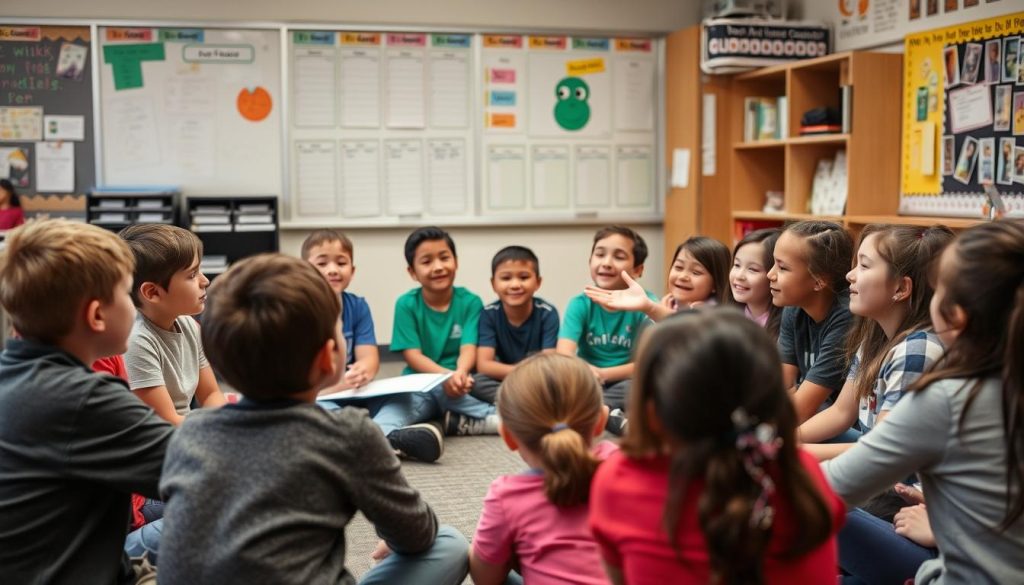
Building relationships is a two-way street. While learning about your students is essential, sharing appropriate aspects of your own life and experiences is equally important. When you demonstrate authenticity, you humanize yourself in students’ eyes and create opportunities for genuine connection. These teacher skills require thoughtful boundaries, but when implemented effectively, they can transform classroom dynamics.
Guidelines for Appropriate Teacher Sharing:
- Share relevant personal stories that connect to curriculum or character education
- Be open about your learning journey, including challenges you’ve overcome
- Discuss age-appropriate interests like books, hobbies, or travel experiences
- Use personal anecdotes to illustrate concepts or make learning memorable
- Maintain professional boundaries by avoiding oversharing or inappropriate topics
When students see that you’re willing to share parts of yourself, they often become more comfortable sharing their own thoughts and experiences. This reciprocity builds trust and creates a classroom environment where authentic communication is valued.
“Students don’t care how much you know until they know how much you care.” — Anonymous
The key to effective sharing is maintaining appropriate professional boundaries while still being authentic. Your personal stories should serve a purpose—whether illustrating a concept, building rapport, or demonstrating values—rather than simply filling time. These teacher skills require ongoing reflection about what’s appropriate to share in your specific context.
5. Positive Reinforcement: Encouraging Ways to Connect
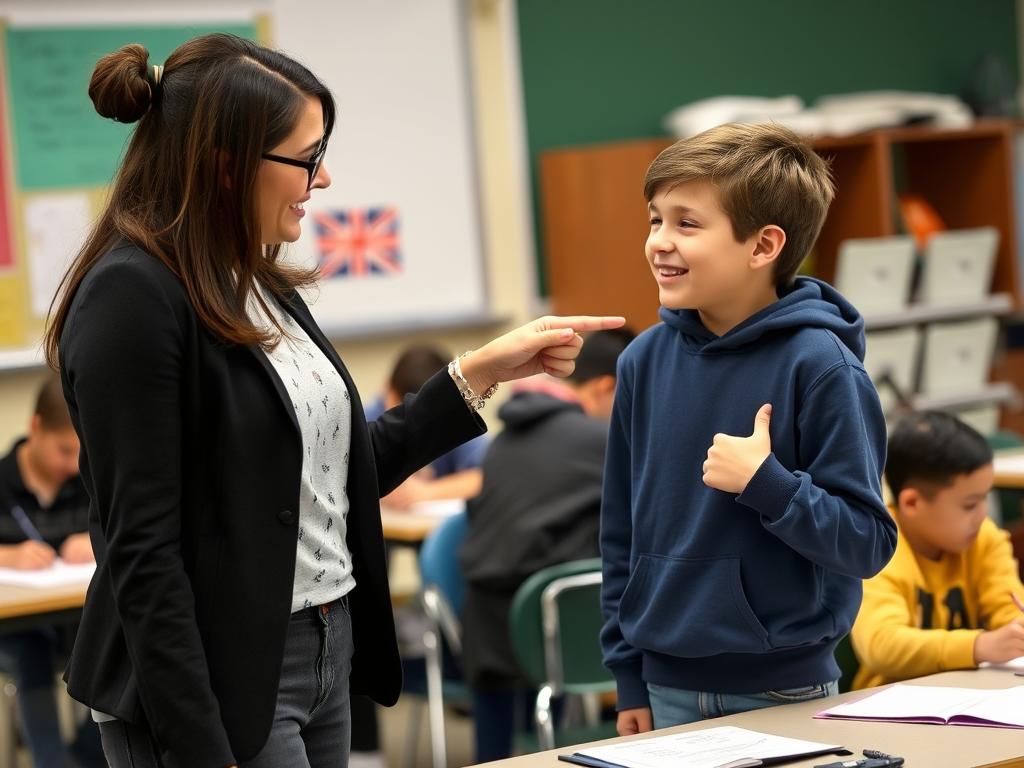
Positive reinforcement is a cornerstone of effective teaching and one of the most powerful ways to connect with students. When you recognize and acknowledge students’ efforts, achievements, and growth, you strengthen your relationship while motivating continued progress. These teacher skills go beyond generic praise to create meaningful connections based on specific observations and authentic appreciation.
Effective Positive Reinforcement Strategies:
- Provide specific, descriptive feedback rather than generic praise
- Recognize effort and process, not just final outcomes
- Use a variety of reinforcement methods including verbal, written, and visual acknowledgment
- Create private recognition opportunities for students who prefer not to be praised publicly
- Establish positive communication with families through good news calls or notes
Research consistently shows that effective positive reinforcement improves both academic performance and behavior. A study published in the Journal of Special Education found that specific praise statements led to significant improvements in on-task behavior and reduced disruptive behaviors.
The most effective reinforcement is immediate, specific, and sincere. Rather than saying “Good job,” try “I noticed how you persisted with that challenging math problem and tried three different strategies until you found one that worked. That kind of perseverance is exactly what mathematicians do.” These teacher skills help students understand exactly what they did well and why it matters.
Quick Tip: Create a goal to provide at least five specific positive comments to each student every week. Keep track using a simple checklist to ensure you’re connecting with all students, not just the most visible ones.
6. Building Classroom Community: Collective Ways to Connect
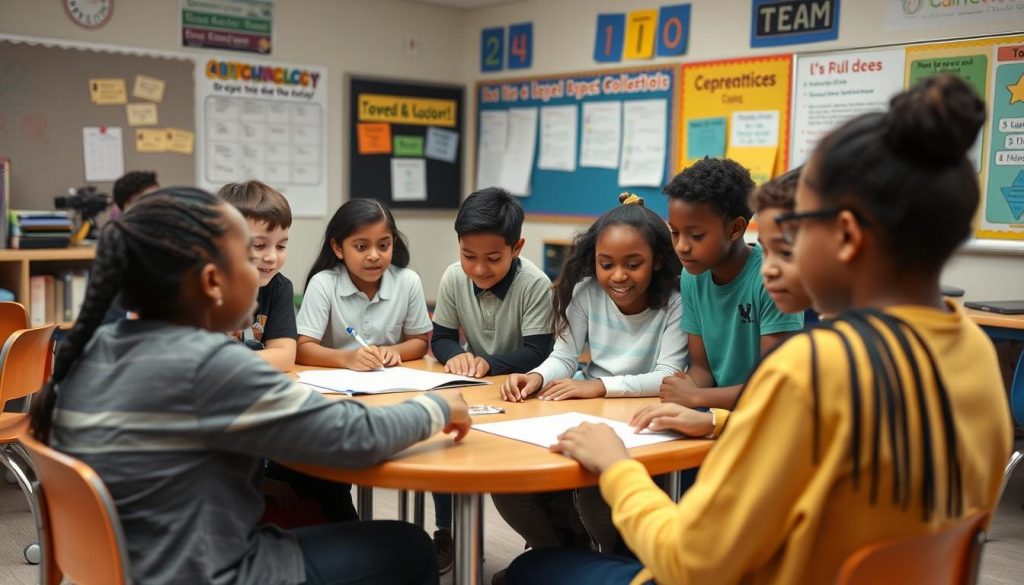
While individual connections are vital, creating a sense of classroom community provides additional ways to connect with your students collectively. A strong classroom community fosters belonging, mutual respect, and shared purpose—all essential elements for student engagement and well-being. These teacher skills focus on creating an environment where everyone feels valued and connected.
Effective Community-Building Strategies:
- Co-create classroom norms and values with student input
- Implement regular class meetings to discuss concerns and celebrate successes
- Use cooperative learning structures that promote positive interdependence
- Establish classroom traditions and rituals that students look forward to
- Create shared experiences through class challenges, projects, or service learning
When students feel they belong to a supportive community, they’re more likely to take academic risks, support their peers, and engage fully in learning. These teacher skills help create a classroom where students feel safe both emotionally and intellectually.
“Community is not something you have, like pizza. It’s something you do. Like dancing.” — Jodi Kramer
Building community requires intentional effort, especially at the beginning of the school year. Investing time in community-building activities pays dividends throughout the year in improved behavior, increased engagement, and stronger peer relationships. Many teachers find that as their classroom community strengthens, their need for traditional behavior management decreases.
Strengthen Your Community-Building Skills
Looking for proven community-building activities that align with academic standards? Our professional development courses offer practical strategies you can implement immediately.
7. Honoring Student Cultures: Inclusive Ways to Connect
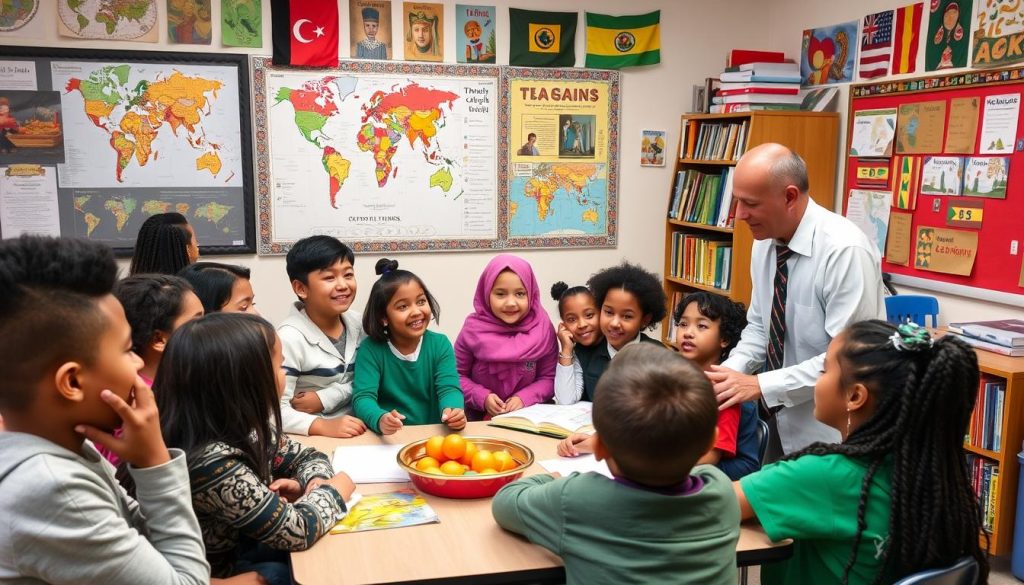
Every student brings a unique cultural background to your classroom. Honoring and celebrating these diverse cultures creates powerful ways to connect with students while enriching the learning environment for everyone. These teacher skills demonstrate that you value diversity and help students develop cultural competence—an increasingly important skill in our global society.
Strategies for Honoring Student Cultures:
- Create opportunities for students to share cultural traditions and celebrations
- Incorporate diverse perspectives and voices in your curriculum and classroom library
- Learn to pronounce names correctly and understand their significance
- Invite family and community members to share cultural knowledge and expertise
- Acknowledge and celebrate multilingualism as an asset in your classroom
When students see their cultures reflected and valued in the classroom, they develop stronger academic identities and greater engagement. A study published in Teaching and Teacher Education found that culturally responsive teaching practices significantly improved student motivation and achievement.
These teacher skills require ongoing learning and self-reflection. Take time to learn about the cultural backgrounds represented in your classroom and consider how your own cultural lens influences your teaching. Be open to feedback and willing to adapt your practices to better serve all students.
Reflection Question: How do the cultural backgrounds of your students influence their learning preferences, communication styles, and educational values? How can you adapt your teaching to honor these differences while maintaining high expectations for all?
8. Leveraging Technology: Digital Ways to Connect
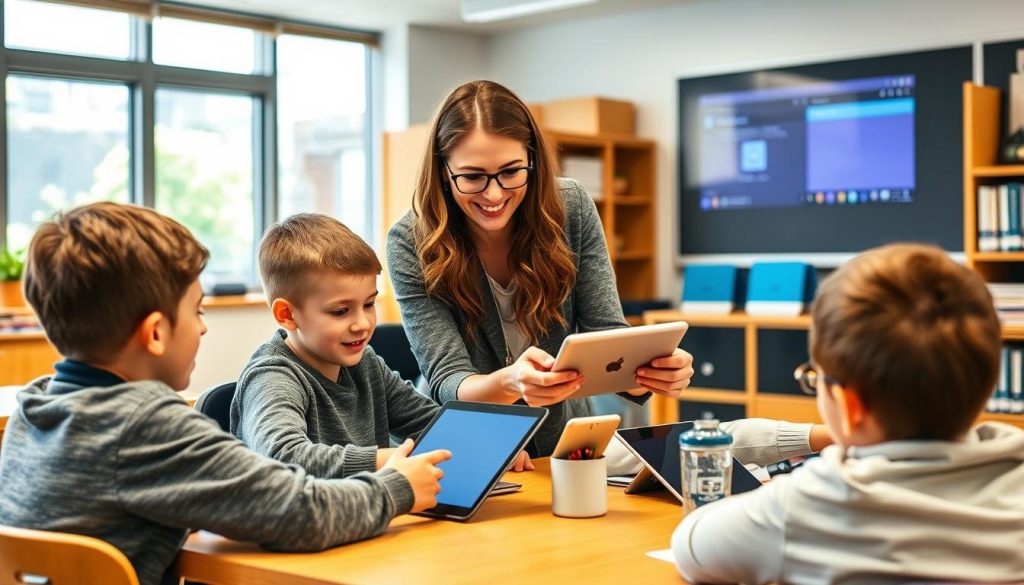
In today’s digital world, technology offers innovative ways to connect with students both in and outside the classroom. When used intentionally, digital tools can enhance relationships, provide personalized feedback, and create new channels for communication. These teacher skills help you leverage technology to strengthen connections while maintaining the human element that’s essential for meaningful relationships.
Effective Digital Connection Strategies:
- Use digital feedback tools to provide timely, specific comments on student work
- Create class blogs or discussion boards where students can share ideas safely
- Implement digital check-ins using forms or quick polls to gauge understanding and well-being
- Record personalized video messages for encouragement or explanation
- Establish clear communication channels with students and families
The key to effective digital connection is ensuring that technology enhances rather than replaces personal interaction. These teacher skills require thoughtful implementation and clear boundaries to maintain appropriate professional relationships.
Research from the Learning Sciences Institute suggests that technology can actually deepen teacher-student relationships when it’s used to provide more frequent, personalized feedback and create opportunities for meaningful interaction.
“Technology will never replace great teachers, but technology in the hands of great teachers is transformational.” — George Couros
As with all teacher skills, the effectiveness of digital connection strategies depends on your specific context. Consider your students’ access to technology, your school’s policies, and your own comfort level when implementing these approaches. Start with one or two strategies that align with your current teaching practice, then expand as you gain confidence.
Implementing These Ways to Connect: Practical Next Steps
Understanding these eight ways to connect with students is just the beginning. The real impact comes from consistent, intentional implementation in your daily teaching practice. Here’s a framework to help you integrate these teacher skills into your classroom routine:
Start Small and Build Gradually:
- Choose one or two strategies to implement first rather than trying everything at once
- Set specific, measurable goals for your relationship-building efforts
- Create simple systems to ensure consistency (like check-in rotation charts)
- Schedule dedicated time for relationship-building activities in your lesson plans
- Reflect regularly on what’s working and adjust your approach as needed
Remember that building relationships is not a one-time event but an ongoing process. These teacher skills develop over time through consistent practice and reflection. Be patient with yourself and recognize that even small efforts to connect can have significant impacts on your students.
Implementation Tip: Create a simple tracking system to ensure you’re connecting with all students, not just those who naturally seek attention or connection. This could be a checklist, digital tracker, or even a stack of index cards with student names that you cycle through during the week.
As you implement these strategies, pay attention to how different students respond. Some may thrive with public recognition, while others prefer private acknowledgment. Some may open up quickly, while others need more time to build trust. Differentiating your approach to relationship-building, just as you would differentiate instruction, ensures that you’re meeting the unique needs of each student.
Conclusion: The Lasting Impact of Connection
The eight ways to connect explored in this article represent more than just good teaching practices—they’re investments in your students’ academic success and emotional well-being. When you prioritize relationship-building, you create a classroom environment where students feel safe, valued, and motivated to learn. These teacher skills may require time and intentional effort, but the returns—improved engagement, reduced behavior issues, and increased achievement—make them well worth the investment.
Remember that building relationships isn’t separate from teaching content—it’s the foundation that makes effective content delivery possible. By implementing these strategies consistently and authentically, you’ll not only improve your students’ academic outcomes but also potentially become the teacher they remember for a lifetime.
As you continue developing these teacher skills, remember that relationship-building is both an art and a science. Stay curious about your students, remain flexible in your approach, and keep learning from both successes and challenges. The connections you build today will have ripple effects far beyond this school year.
Enhance Your Relationship-Building Skills
Ready to take your relationship-building skills to the next level? Our comprehensive professional development program offers research-based strategies, practical resources, and continuing education credits for K-12 teachers.

